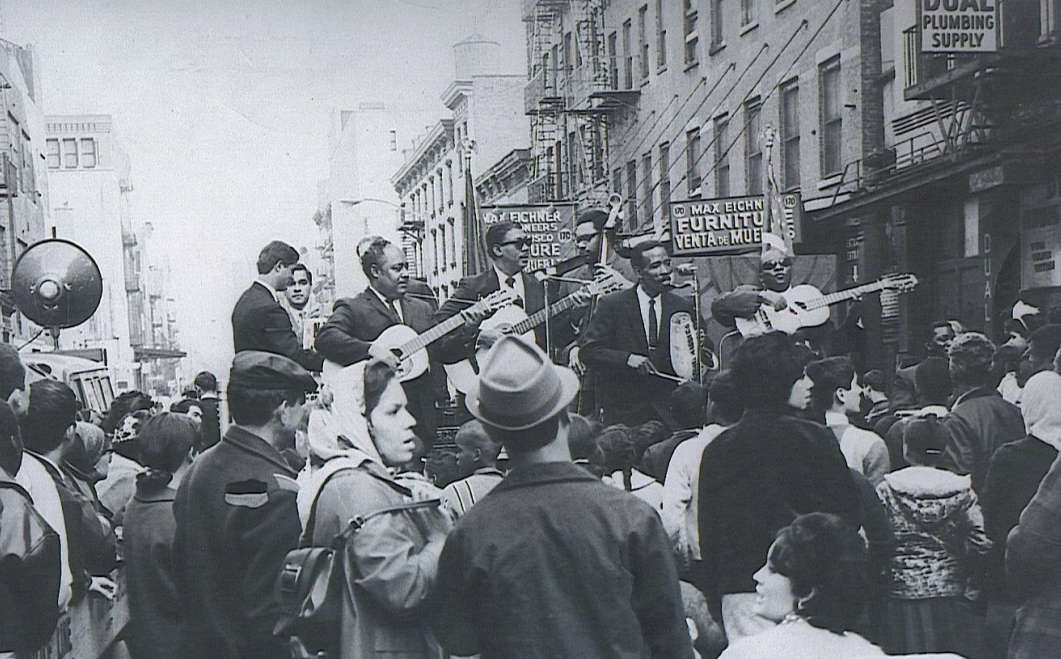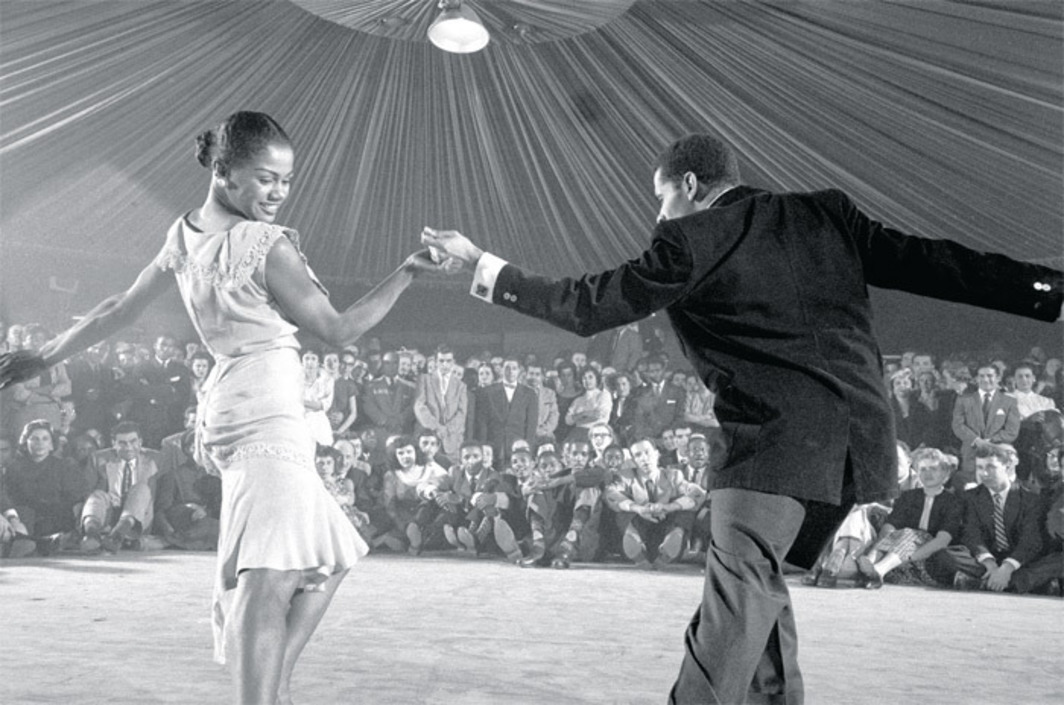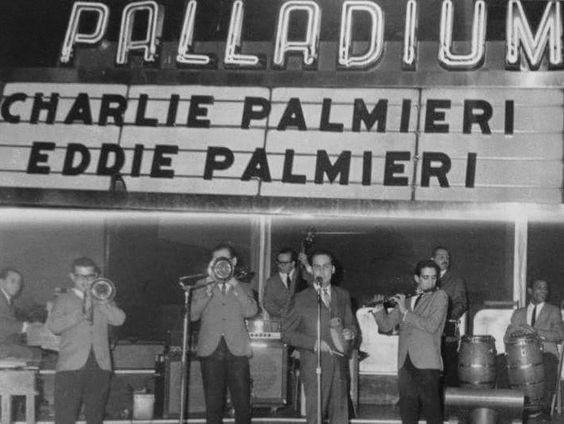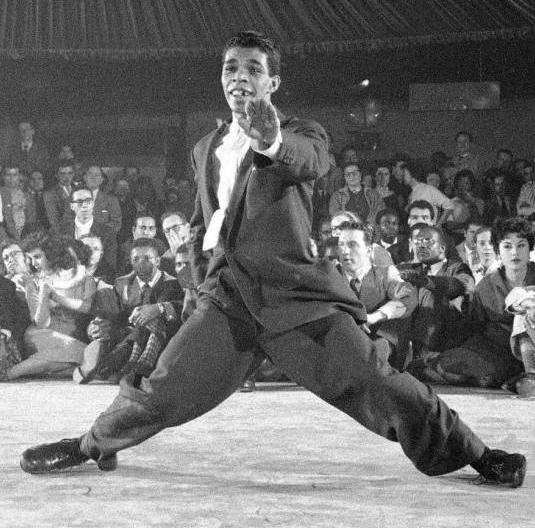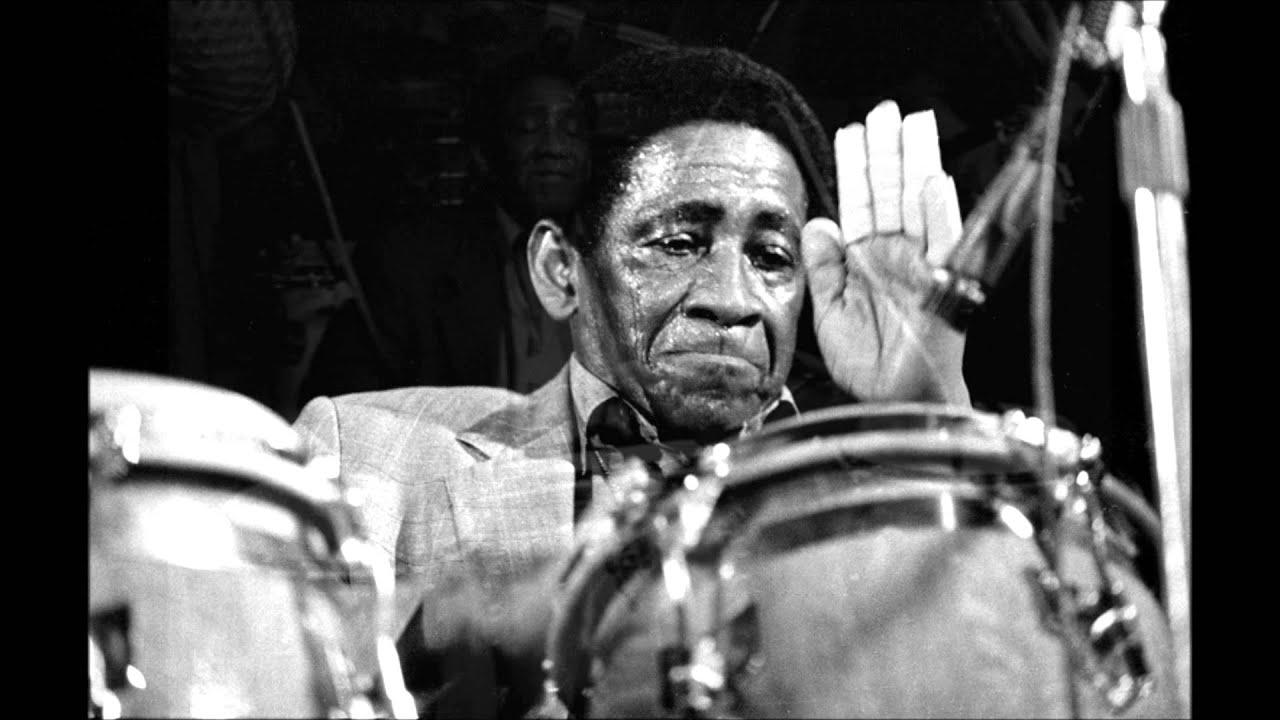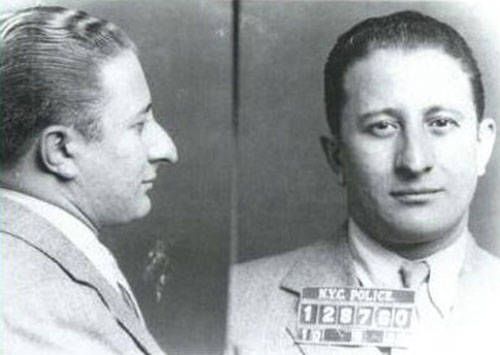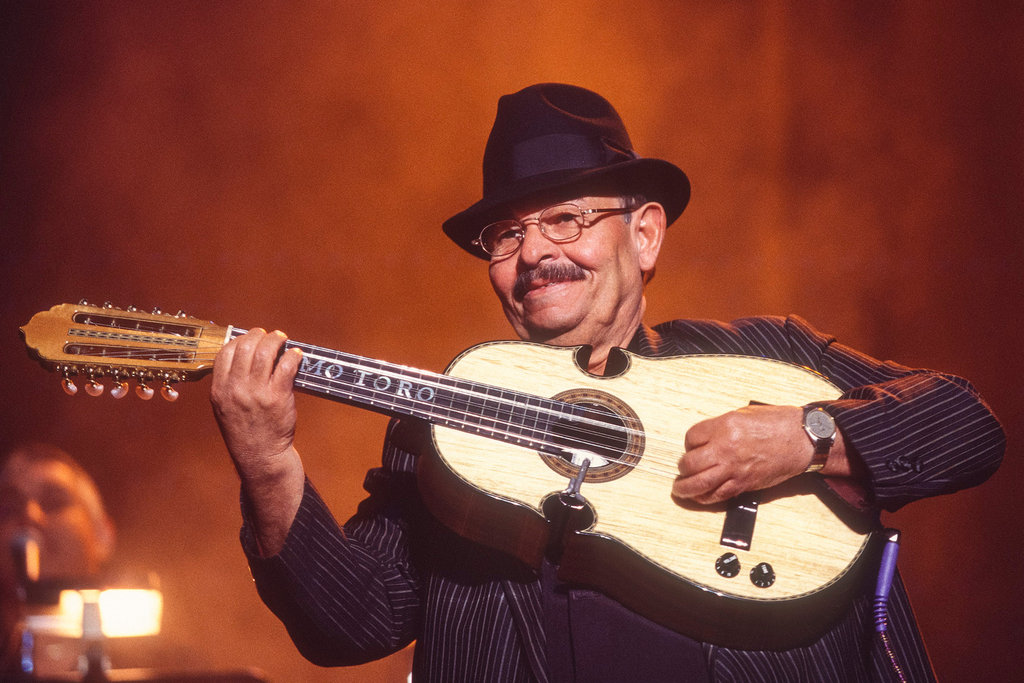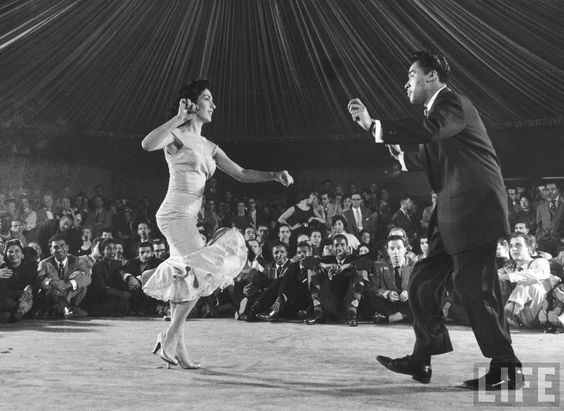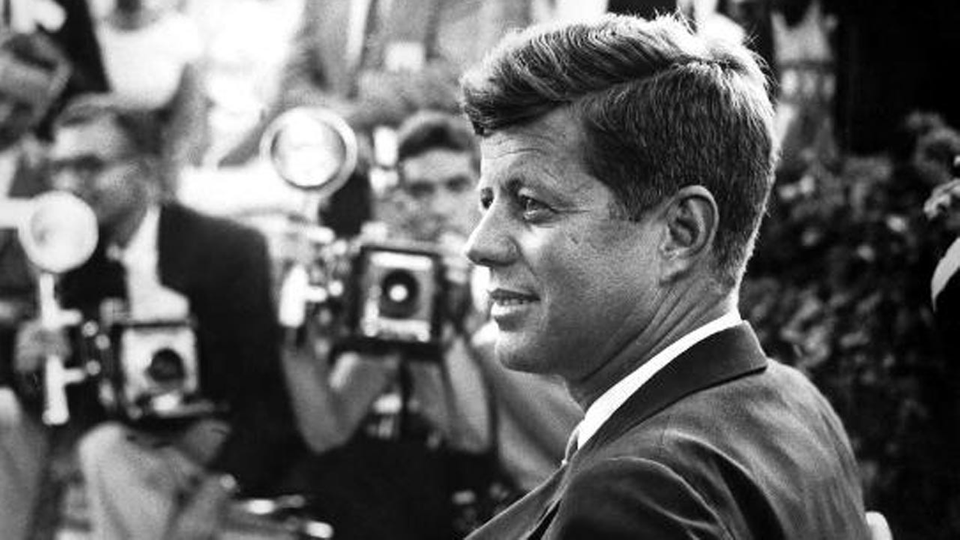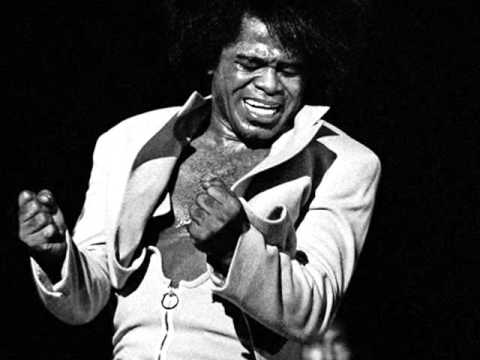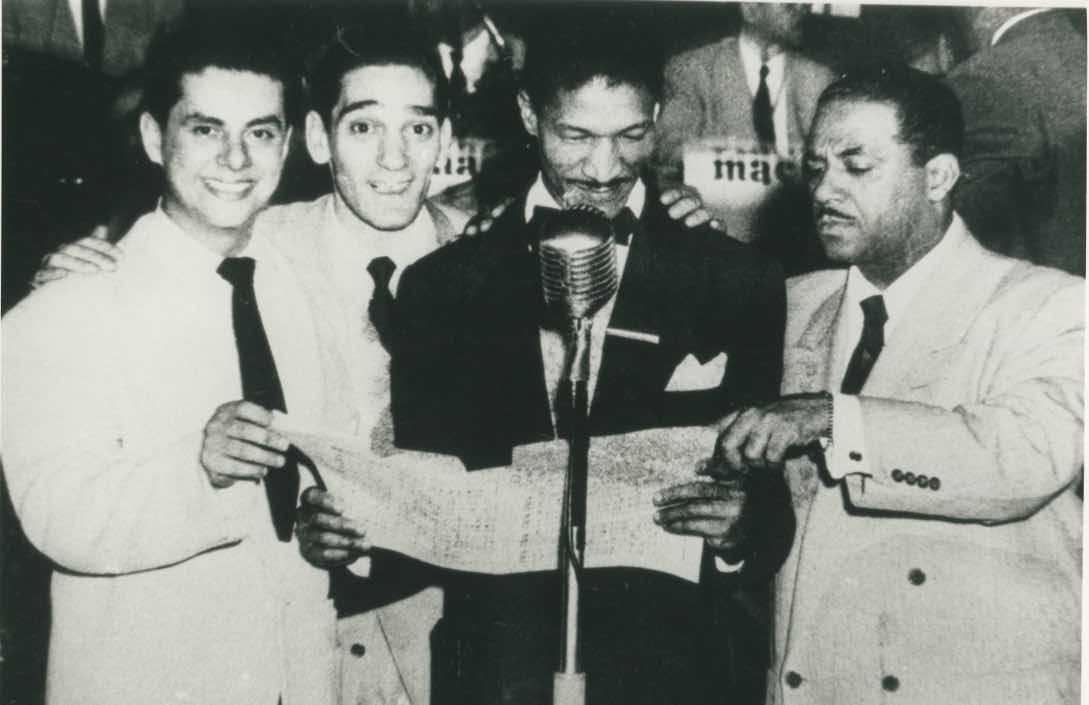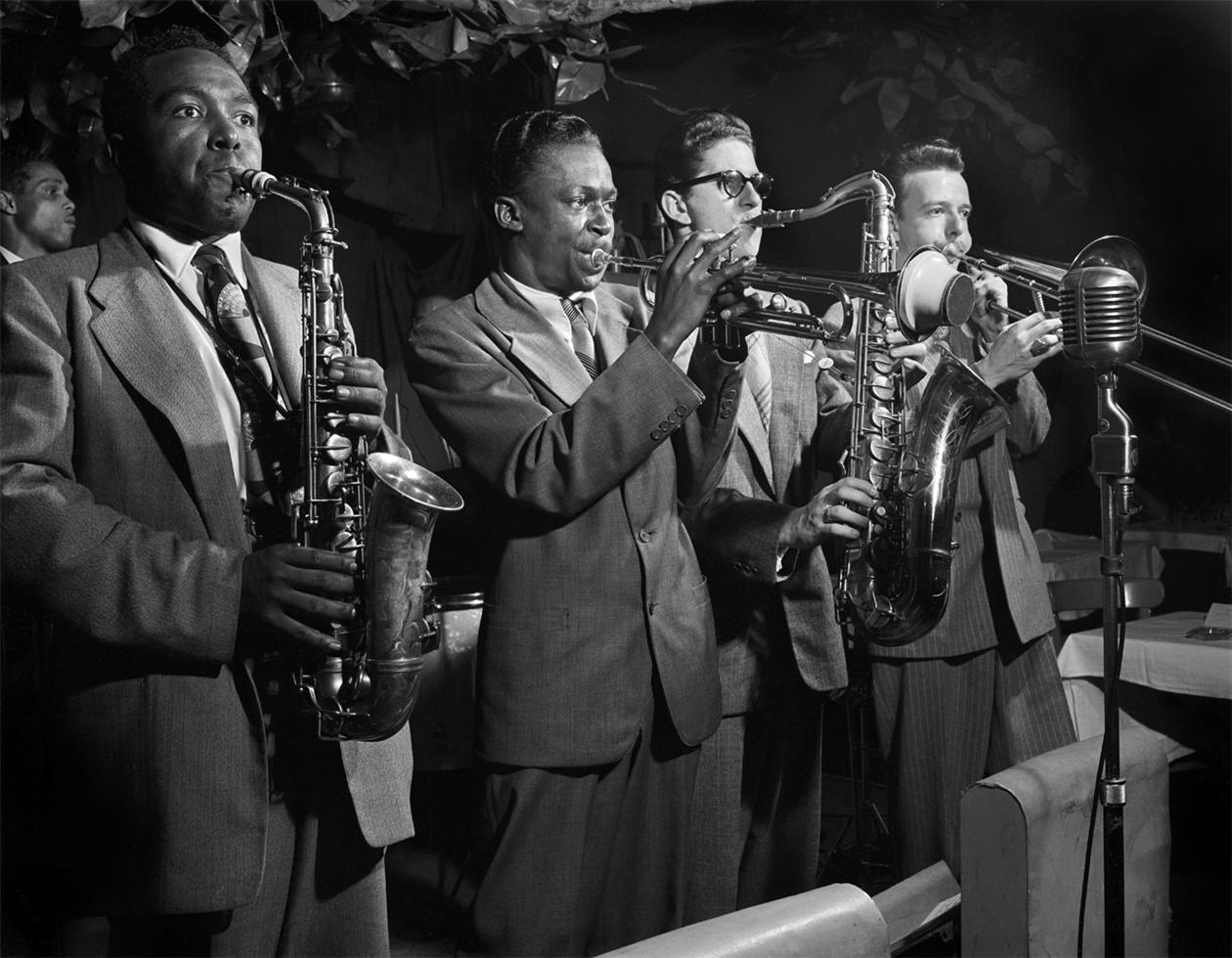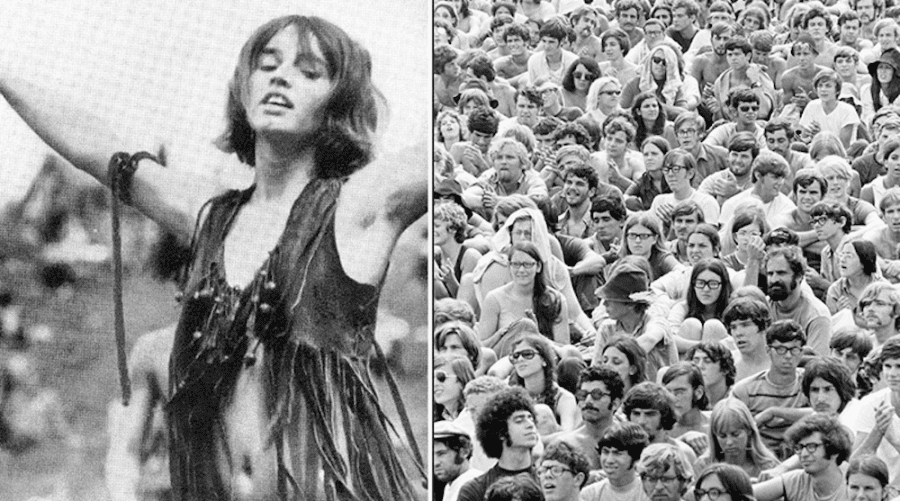Part III: The Palladium Era
 Tito Puente Sr / Legendary Bandleader, Arranger / © LIC 84983
Tito Puente Sr / Legendary Bandleader, Arranger / © LIC 84983
It was at the Palladium Ballroom, located on 53rd and Broadway in Manhattan in the heart of New York City – only eleven short blocks north of Times Square – about a ten-minute walk, that the way Afro-Cuban music was played and danced to, outside of Cuba, completely changed.
The concerts and dances at the Palladium almost single-handedly contributed to the worldwide explosion of what is now called Salsa. Musicians, dancers, and spectators from all over the world – even princes from Europe, visited the Palladium to see for themselves what all the hype was about.
This was a time when racism was systematic; schools and businesses were still segregated – dark-skinned Latinos were racially discriminated against just the same as blacks.
But at the Palladium, it was how well one could dance instead of the color of one’s skin, which made the difference.
Take a look at this short clip, filmed in March of 2015, which captures a visit to where the Palladium used to be located.
 Arsenio Rodriguez, Alfonso Panamá, Marcelino Guerra, and Israel Berrios in New York City / © Paquito Pastor
Arsenio Rodriguez, Alfonso Panamá, Marcelino Guerra, and Israel Berrios in New York City / © Paquito Pastor
In 1945, the Palladium Ballroom began a Latin Night once a week – on Sundays, but very soon after, the ballroom became all-Latin exclusive with live orchestras and dance-shows on every Wednesday, Friday, Saturday, and Sunday evenings!
The Palladium became known as the Home of the Mambo.
That era became affectionately known as the Palladium-era, which ran from 1945 to 1966. World War II had just ended when the Palladium opened Latin Nights; soldiers were returning home.
This was a time when gifted musicians mainly from Puerto Rico, Dominican Republic, and Panama – finally had the grand experiences of collaborating with the great Cuban orchestras and bandleaders whose music had already become so familiar through the Afro-Cuban era. Percussionists, pianists, vocalists, trumpeters, bassists, guitarists – many of whom were also arrangers and composers – were traveling in very large numbers to New York.
 Show at the Palladium / (c) Yale Joel, Time, Life Pictures, Getty Images
Show at the Palladium / (c) Yale Joel, Time, Life Pictures, Getty Images
The lines of dancers waiting to get into the Palladium sometimes stretched outside the doors and wrapped around several New York City blocks. In a single evening, up to four or five of the most popular ochestras played one right after the other; orchestras competed – the next often trying to outdo the previous.
The two most well-known feuds occured between Tito Puente and Tito Rodriguez during the 50’s, and between Arsenio Rodriguez and Johnny Pacheco during the 60’s.
Tito Puente and Tito Rodriguez both shared the name “Tito” – and their strong artistic-ego competition became known as The Battle of the Two Titos – going as far to spat over whose name appeared first on promotional material.
Johnny Pacheco increasingly feuded with Arsenio Rodriguez – urging him to simplify and commercialize his playing because he felt that Rodriguez wasn’t changing with the times. Rodriguez insisted on keeping with the African roots, but Pacheco experimented with the evolving rhythmic modifications of Pachanga and Bugalú – performing “updated” variations of Rodriguez’s songs.
The Palladium Ballroom – Home of the Mambo
 The Palladium Ballroom / © LIC 84986
The Palladium Ballroom / © LIC 84986
Between the 1930’s and early 1940’s, many musicians and dancers began relocating to New York – mainly from Cuba, Puerto Rico, Dominican Republic, and Panamá. Nearly entire neighborhoods all over New York City, particularly the Lower East Side as well as Spanish Harlem – both in Manhattan, and Williamsburg – in Brooklyn, the Bronx, Yonkers, and parts of Queens – became enclaves of mostly Puerto Rican families.
In New York, these implants were free to create new identities and ways of life. They brought with them their crafts and memories, foods, voices and dialects, music and styles of dance.
They were Latinos – and needed places to dance!
 Mambo performance a the Palladium Ballroom / © LIC 84989
Mambo performance a the Palladium Ballroom / © LIC 84989
In 1945, big-time promoter Federico Pagani started promoting live “Latin music” at the Palladium – initially with the Machito Orchestra and the Tito Puente Orchestra, and soon after included the Tito Rodriguez Orchestra.
By 1951, the Palladium Ballroom had long become the mecca of Latin music and dancing.
Not since the rhythm inventions and changes, which Arsenio Rodriguez introduced in the 30’s and 40’s in Cuba, had Afro-Cuban music and dance gone through such an evolution.
But, another revolution was exactly what was happening; and this time, it was happening in New York City!
New influences of musicians of different backgrounds changed the dynamics; music was evolving because of the jazz from the blacks, the new melodic influences from the Puerto Ricans, faster tempos from the Dominicans, and the Calypso and newly syncopated rhythms from the Panamanians.
Dancers of all races were crazed.
Celebrities such as Marlon Brando, Sammy Davis Jr, Sugar Ray Robinson, late-night television talk-show host Jack Paar (who had very famously interviewed then-US President John F Kennedy on his show), flocked to the Palladium.
The famous and wealthy sat shoulder-to-shoulder with those less-affluent – watching amazing shows by dancers such as Pedro “Cuban Pete” Aguilar, Millie Donay, Andy Jerrick, Carmen Cruz, Killer Joe Piro, Peanuts, Freddy Rios, Mike Ramos, Dr Mike Greenbaum (also the physician of Hector Lavoe), and Augie & Margo Rodriguez – and many others.
At the Palladium, dancers were judged by how well they could dance – not by how much fame or money they had, or by the color of their skin.
Dominican-born trumpeter nicknamed Chiripa (the first non-Cuban trumpeter to join the famous Cuban band Sonora Matancera), shared, “Any musician or orchestra that did not play at the Palladium was not a musician or an orchestra” (La Época – The Palladium Era, 2008).
1950’s: Elvis Presley, Jazz, Exodus from Cuba, and the Mafia
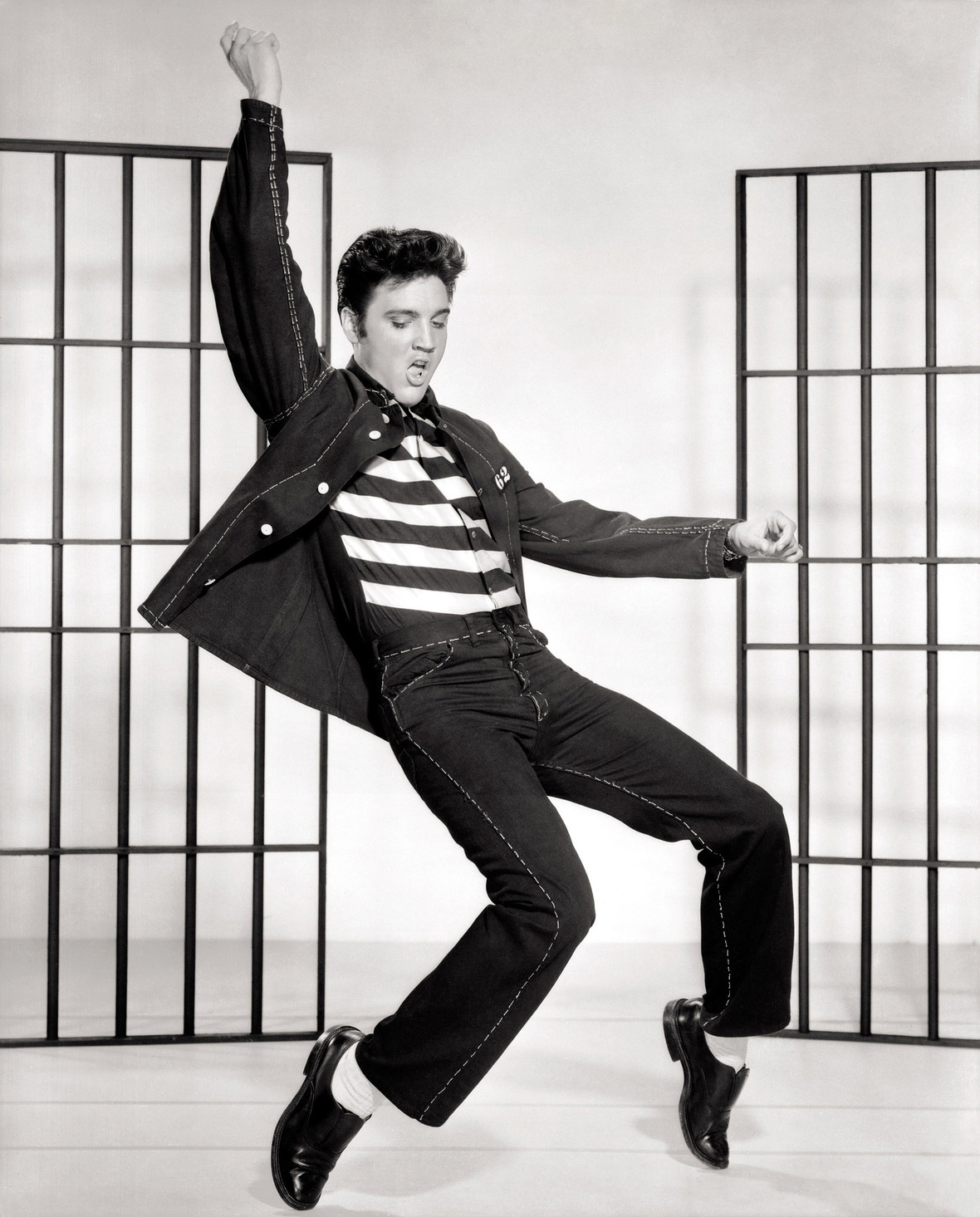 Elvis Presley / © LIC 84993
Elvis Presley / © LIC 84993
The early to mid 1950’s saw many changes.
By 1956, Elvis Presley had already become an international sensation! His approach to music and dancing was unique. Rock & Roll was the new craze; working bands kept up with the latest trends; familiarity with Rock & Roll was necessary.
Jazz was another phenomenon; many of the great bandleaders and musicians of the Palladium began to fuse Afro-Cuban elements into Jazz – creating new crazy sounds, which they called “Afro-Cuban Jazz”, or Latin Jazz.
 Mongo Santamaría / Master Rumba percussionist; Afro-Cuban Jazz
Mongo Santamaría / Master Rumba percussionist; Afro-Cuban Jazz
/ © LIC 84965
Political strife and the resulting revolution on the island of Cuba caused a mass exodus – mainly to New York. Musicians had been hearing about the Palladium all the way down in Cuba! Among the musicians who fled were the musical genius, bandleader, and multi-instrumentalist Arsenio Rodriguez, Carlos “Patato” Valdés (a highly-skilled conga-player), Mongo Santamaría (a master-Rumbero on the congas and bongos), and Marcelino Guerra (a favorite vocalist among many Cuban musicians), among plenty of other gifted musicians.
Hugely popular Cuban bandleaders Machito and Mario Bauzá had already been in New York popularizing the musical inventions and styles of Arsenio Rodriguez as well as Afro-Cuban Jazz. But, with the arrival of Rodriguez in the crazy exciting and competitive scene of New York City, the best musicians clamored to collaborate with him; these new giant collaborations gave new life to the Mambo craze of the Palladium.
Though Patato Valdés and Mongo Santamaría were masters of Afro-Cuban percussion, they found much greater success in the new Afro-Cuban Jazz scene.
 Carlo Gambino / Mafia Gambino Crime Family / © LIC 84941
Carlo Gambino / Mafia Gambino Crime Family / © LIC 84941
Before the end of 1959, Jimmy Hoffa was the president of the Teamsters Union, both Alaska and Hawaii were admitted to the United States, the new Cuban government of Fidel Castro was recognized by the United States, musicians Buddy Holly and Ritchie Valens and The Big Bopper all perished in a plane crash, and major Mafioso figures including Vito Genovese, Carlo Gambino, Paul Castellano, and Joe Bonanno were arrested at the home of Joe Barbara, Sr. during the collapsed Apalachin Conference (following this incident, federal authorities were forced to admit the existence of organized crime).
The Mafia were in control of many of the nightclubs in New York; some major bandleaders began making secret deals to gain high-profile, high-paying concerts. But crime, drugs, and prostitution were on the rise; several important musicians started to become incarcerated while others lost their lives to overdoses as well as drug-violence. The scene was changing.
Early 1960’s: Latin Music Effected by World Events
 Yomo Toro / Master cuatro-guitar / © Vartoogian, FrontRowPhotos
Yomo Toro / Master cuatro-guitar / © Vartoogian, FrontRowPhotos
By 1963, Cuban-only bands were no longer; the diversity of influences brought in by musicians and dancers of non-Cuban nationalities created such an exubrant richness and vibe, that the music and dancing were much livlier and more popular – and musicians were earning more.
Puerto Rican musicians had become stars, such as Tito Puente, Tito Rodriguez, Charlie Palmieri and his brother Eddie Palmieri, Ismael Rivera and Rafael Cortijo, Charlie Rodriguez and Yomo Toro, José Mangual Sr and his two sons – José Mangual Jr (of the Willie Colón Band and the Hector Lavoe Band), and Luis Mangual (of the Johnny Pacheco Orchestra), among others.
Master-musician and bandleader Johnny Pacheco was born in the Dominican Republic but had grown up in New York City since his preteens, and Panamanian musicians such as high-note specialist trumpeter Vitín Paz and arranger, songwriter, vocalist, and master-bassist Alfonso Panamá were regular, fulltime musicians in the top bands in New York.
The Palladium was home of the Mambo. But the entrance to the Birdland was the next door over, literally. Jazz musicians began sitting in with the Latin musicians while one band was finishing and the next was setting up; this accidental, chance experimentation led to the birth and explosion of a new musical genre – Afro-Cuban Jazz. Soon after, the majority of musicians were required to be well-versed in Afro-Cuban rhythms, Jazz, and Afro-Cuban Jazz.
 Cuban Pete (Pedro Aguilar) & Millie Donay, Palladium Ballroom
Cuban Pete (Pedro Aguilar) & Millie Donay, Palladium Ballroom
Latin music and dance, and Jazz became so big that other venues became regular hotspots all over New York, such as the Roseland Ballroom and the Birdland (located next-door to the Palladium), El Corso’s Nightclub, Havana San Juan Club and Havana Madrid Club, and Hunts Point Palace, among others.
In music, dance, and television entertainment, the world saw many changes: one of the biggest changes occurred in the mid 1960’s when the Beatles had arrived in New York and swept the nation by storm.
Additionally, Elvis Presley, Nat King Cole, Frank Sinatra, Louis Armstrong, Bing Crosby, Ella Fitzgerald, Duke Ellington were popular; Ray Charles and James Brown had become superstars, the Ed Sullivan Show and “Live at the Apollo” were major attractions, and the Nicholas Brothers were stars.
Everything happening, especially in America, was effecting how musicians and dancers expressed themselves; whatever struggles were happening in their lives – they danced that, they played that.
This was a time when Puerto Ricans had their own style of dancing, that Dominicans, Italians, Jewish, the Irish, the blacks and Cubans all had their own styles, too. Yet, because their foundation was the same, their style of expression through dance were completely compatible.
 US President John F Kennedy / © Bildquelle, dpa Picture-Alliance
US President John F Kennedy / © Bildquelle, dpa Picture-Alliance
Playing music and dancing was a necessary distraction from the depressing changes occurring at the time.
By 1965, US President John F Kennedy as well as Civil Rights leader Malcom X had already been assassinated, Marilyn Monroe’s life had alrady come to an abrupt halt, and the unpopular Vietnam War was raging.
An epidemic of heroin and other illegal drugs ran rampant in Harlem and other parts of New York – and the Italian and Russian mafia ruled many Casinos and entertainment venues, and in what is referred to as the Civil Rights Movement – the US Supreme Court gave married couples a constitutionally-protected right to use oral-contraceptives (birth-control pills) – although single women still fought for their rights – and minorities and women in America were fighting for their housing, medical, and voting rights.
There was strife in the United States. Times were difficult. Racism against blacks and Latinos was systematic; minorities were raging against mistreatment by police and the laws for their rights. Though Malcom X had just been assassinated, many minorities were still rallying behind Civil Rights icon Reverend Dr Martin Luther King Jr.
Though times were difficult, the entertainment industries were flourishing more, perhaps because they were therapeutic by providing some necessary anesthesia for life-problems.
Late 1960’s: The Palladium Closes – A New Era Begins
 James Brown / Funk superstar, vocalist, songwriter, dancer / © LIC 84923
James Brown / Funk superstar, vocalist, songwriter, dancer / © LIC 84923
Blacks and Latinos were minorities; they could not exercise the same constitutional rights as whites, but with schools, businesses, and employers being forced to integrate, so did the entertainment in music and television.
James Brown began to show off intense footwork and dance-moves, particularly at a time when the Pachanga and Bugalú were beginning to dominate the Palladium and the other New York venues; simple observations of some of his footwork will reveal close similarities.
Many of the greats, such as Nat King Cole, Frank Sinatra, and Duke Ellington experimented with Boleros and Afro-Cuban jazz. Cuban actor, musician and showman Desi Arnaz was one of the top celebrities in America (the “I Love Lucy” television show with Lucille Ball), and Cuban showman and musician Pupi Campo was a regular on the Jack Paar television show – in which he often played Afro-Cuban rhythms and danced for the live studio audiences.
It was clear: the Mambo craze was ending – and a new sound and era were emerging.
 Palladium icons Tito Puente, Killer Joe (MC of the Palladium Ballroom), René “El Látigo” Hernandez, and Machito / © Colección Gladys Palmera
Palladium icons Tito Puente, Killer Joe (MC of the Palladium Ballroom), René “El Látigo” Hernandez, and Machito / © Colección Gladys Palmera
The Palladium Ballroom closed in the Spring of 1966 due to a surprise police drug raid. Many musicians had fallen into the heroin epidemic by bypassing the Cabaret License Law, which required performers to be drug-free to acquire and hold on to a license to perform.
Though hugely disappointed by the closing of the Palladium, dancers enthusiastically continued buying up Latin records and attending Latin nights at other venues. Palladium promoter Federico Pagani started Latin Nights at El Corso on 86th Street and Third Avenue, and at the Village Gate – located in Greenwich Village (southern Manhattan) with Latin Night on Mondays and Wednesdays, and at the Cheetah Nightclub.
But the Mambo craze had come to an end; dancers and musicians were instead crazed about Pachanga, Bugalú, and the Cha-Cha-Chá. Bigbands were no longer “the sound,” so new, smaller bands were forming – becoming increasingly popular for concerts and parties.
 Charlie Parker, Miles Davis, Allan Eager & Kei Winding
Charlie Parker, Miles Davis, Allan Eager & Kei Winding
NYC 1948 / © Herman Leonard, 1948
 Woodstock, New York / © World Lifestyle
Woodstock, New York / © World Lifestyle
By 1972, the scene in New York was very different. The infiltration of drugs, sexual freedom, and cultural rebellion were prevelant; birth-control pills for women in America were now fully legal. For example, Woodstock in New York had already taken place in August of 1969.
With the Civil Rights Movement having finally come to an end – bringing new constitutional freedoms to minorities and women (such as voting and fair housing), new priorities were surfacing; this lead to less concerts and less dancers. Strangely, however, Latin record sales increased (in-part due to the monstrously successful marketing practices of Fania Records – as well as consumers holding barbecues and parties in their own new homes).
Many musicians began retiring, others began leaving New York to try to recreate the Mambo hype in other cities, such as Miami, Los Angeles, Chicago, and back in Puerto Rico. Among them, Cuban musical genius Arsenio Rodriguez relocated to Los Angeles and had begun a movement out there.
Rodriguez’s longtime bassist Alfonso Panamá stayed in New York working with the orchestras of Johnny Pacheco and Machito while giving Rodriguez’s petition of joining him out in Los Angeles some serious thought; two days after Rodriguez made the request, the news was all over the radios – Arsenio Rodriguez had died (30 December of 1070, in Los Angeles).
The Palladium Era was over. A new movement – a new era had already begun, led by master-musician Johnny Pacheco with the founding of his new record-label – Fania Records.

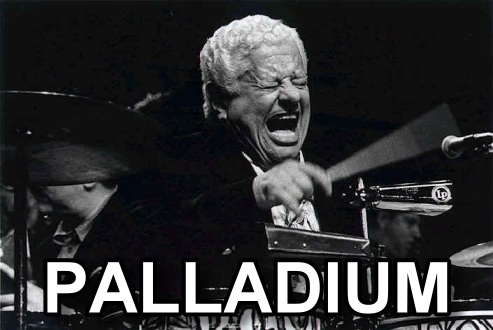 Tito Puente Sr / Legendary Bandleader, Arranger / © LIC 84983
Tito Puente Sr / Legendary Bandleader, Arranger / © LIC 84983